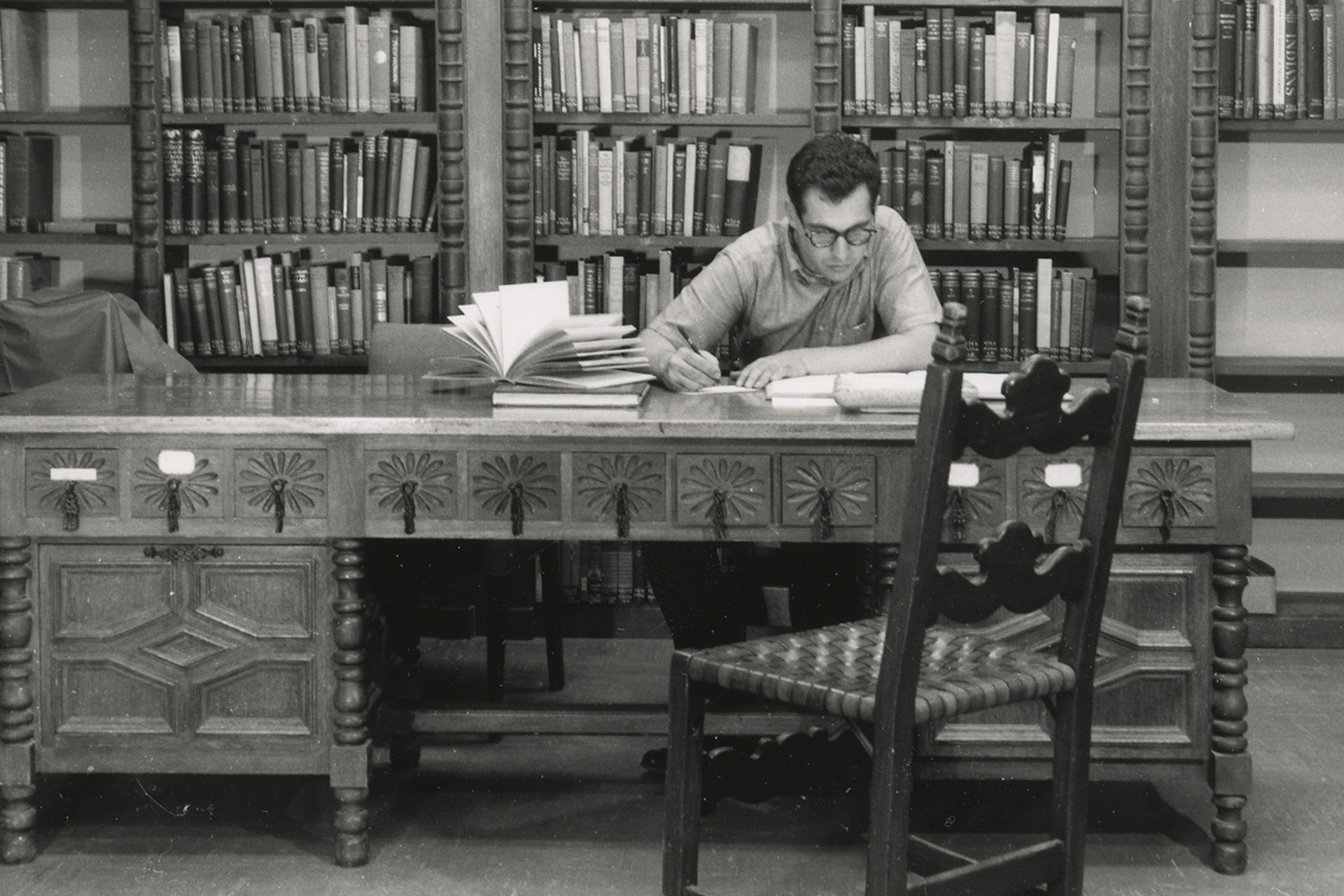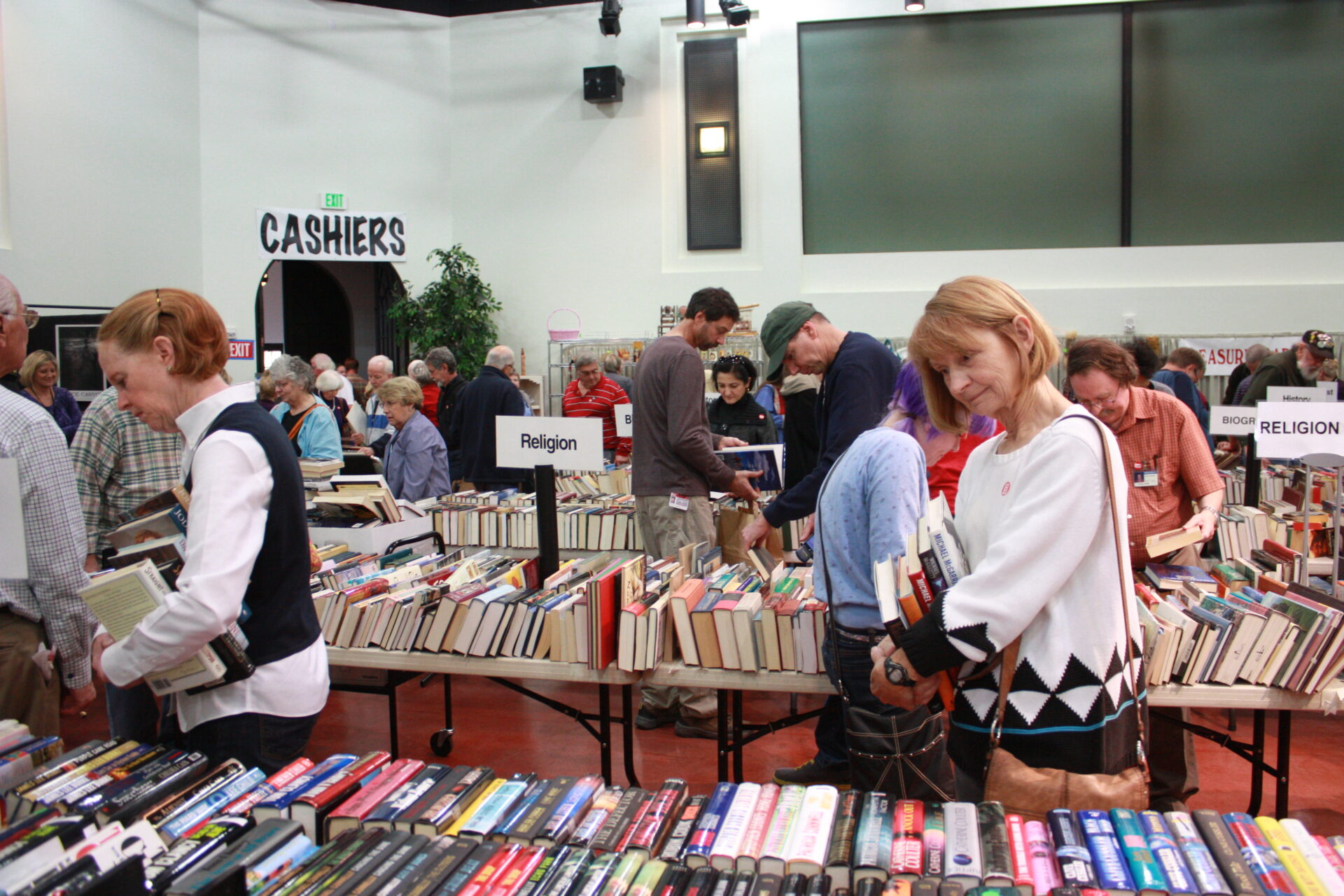Ann E. Marshall, director of research
When the Heard Museum opened in 1929, it had a library. Floor plans show it located with the museum office in the first room to the left upon entering the museum. No information exists on the size of the library’s book collection, but on Oct. 1, 1937, opening day for the Heard’s ninth season, two very similar newspaper articles were published in The Arizona Republic and The Phoenix Gazette, probably taken from a museum press release, with the Gazette’s headline reading “Many Books Added by Heard Museum.” Although no specific quantity was mentioned, the article said that the library contained “several hundred reference books on archaeology and kind red subjects.
More than 20 years later, Curator Tom Cain reported to the Board of Trustees on June 20, 1958, that the library had been moved from the “old location” to office rooms on the second floor.How did that happen? The same way that so many projects at that time occurred: through the efforts of the Heard Museum Guild. According to Cain’s report to the Board, “Several women of the auxiliary graciously assisted in the hot and heavy chore.
In 1962, for the first time, the museum’s library received the attentions of a professional librarian: Carol Ruppé, a research librarian at Arizona State University. The university allowed her to work half a day each week with the Heard library and its four Guild volunteers as a community service. Ruppé’s work with the library continued through another move for the library into what was known as the Murdoch expansion, which added several structures to the north side of the museum. Once again, the library was in an office area, available to researchers but primarily for use by museum staff.
That all changed in 1979, when Dr. Robert I. Schattner initially placed on loan, and then in 1987 donated, more than 30,000 volumes he had purchased from the Prescott College Library as a result of the college’s 1974 bankruptcy. A Jan. 14, 1987, press release from the Heard celebrating Dr. Schattner’s gift described some of the more important collections it contained.
Especially important was the Donald Scott library. Scott was a former director of the Peabody Museum of Anthropology at Harvard University, and his library included 2,000 volumes with Southwest regional emphasis. Also included was the Paul Sears Pamphlet Collection of rare pamphlets, papers and ephemera concerning anthropology and natural history and some of the Prescott College Library’s Special Collection that included “classic works on anthropology.” It is difficult to overestimate the importance of this gift. The Heard Museum now had a library that was an incredibly valuable resource for scholars and required the skills of a full-time librarian. Mary Graham was hired in 1979 to be the Heard’s first professional librarian. She remained the librarian until 1987. Upon her leaving, our present library and archives director, Mario Nick Klimiades, joined the staff.
Graham and Ruppé collaborated on a project that focused on collecting ephemera, which Graham characterized as “things that are elusive.” This was the beginning of what Klimiades has called a cornerstone of the Billie Jane Baguley Library and Archives, the Native American Artists Resource Collection. Building the collection, Graham and Ruppé covered an estimated 8,000 miles on road trips to artists’ homes across Arizona and New Mexico. One of Graham’s favorite stories involved visiting a friend of Ruppé’s at Laguna Pueblo, where they were met by two “gigantic guard geese” who kept them in their car until the owner called them off. In 1985 they published The Native American Indian Artists Directory, which was just the beginning.
With the Schattner gift, the growing library once again needed to be relocated. A brief stay in the then-auditorium led to cracking of some of the ceiling slabs in the main collections storage area, so what is now the Sandra Day O’Connor Gallery became the library’s home until the 1983-1984 construction provided a much larger, dedicated space for the library, adjoining the administrative offices on the second floor. To move the library into the new second-floor space, Graham needed movers who were young, full of energy, accustomed to working together, and most of all would take great care of the works they were moving. Fortunately, the Phoenix Indian School band was raising funds for travel projects. Perfect! Graham planned meticulously, had special carrying racks built for the books, and set aside two days for the move. The students were finished by lunchtime on the first day.
Throughout the library’s history, it has been Heard Museum Guild volunteers who provided the hours of trained, knowledgeable work needed to process and record new materials, maximizing the library’s potential. By 1985, library committees were growing to include the Library and Archives Committee, the Slide and Photograph Committee, and the Native American Resource Collection Committee. Graham began joining organizations such as the Art Libraries Society of North America, which brought the Heard to the attention of a wider audience.
In 1997, Guild volunteer Cookie Tarkoff convinced Klimiades that the Guild could create a book sale that would bring in needed funds to purchase books and place the museum’s catalog online. It didn’t happen overnight, but sale after sale, all very successful, raised funds that were supplemented in 2002 by a $68,000 grant from the Institute of Museum and Library Services through the Arizona State Library, Archives and Public Records agency. The records were given to the nonprofit group Online Computer Library Center for processing. Today, through the umbrella of the Phoenix Public Library, researchers can go online and search the holdings of the museum.

With the 2004 building expansion, the library and archives grew to cover all of the area formerly occupied by offices. An archival vault was constructed, and much-needed compact shelving was added. A visit to the Heard Museum website under the Education tab reveals a staggering number of resources available to researchers who visit in person or online. The Native American Archives collection includes archives from leading artists such as Ramona Sakiestewa and Kay WalkingStick and organization archives such as the Native American Art Studies Association and Atlatl, Inc. The photo archives include more than 300,000 historical and contemporary photographs. The Native American Artists Resource Collection has grown to more than 28,000 names, and the Digital Library includes a Masterworks tab that links library records to artworks in the Heard’s collection.
Today, the Billie Jane Baguley Library and Archives is an international resource for scholars who visit in person and online, while still serving as the community resource that it set out to be in 1929. This has been accomplished through informed guidance and vision of a few professional librarians, leading and inspiring hundreds of volunteers who were prepared to tackle huge projects year after year to achieve the impressive standing that the library enjoys today.







